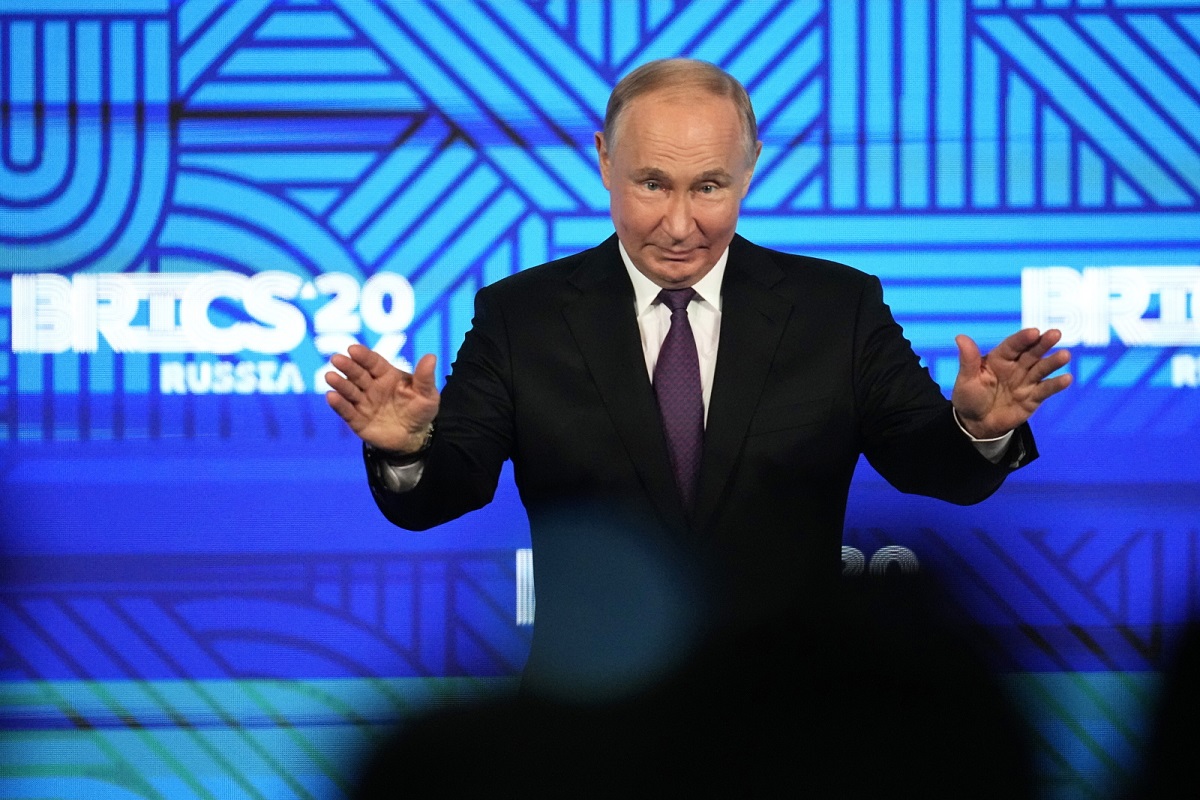The BRICS summit in Kazan became an opportunity for Vladimir Putin to show that, despite pressure from the West, Russia remains an important player on the international stage. Against the backdrop of sanctions and an arrest warrant from the International Criminal Court, the Kremlin is trying to create an image of a country that is not isolated but continues to actively cooperate with major world powers. Is Putin successful in doing so?
BRICS – a Band-Aid for a severed limb
The Russian authorities have called this summit one of the “largest foreign policy events” in Russia. Over 20 leaders from countries with developed economies, including influential players like China and India, gathered at the summit. For the Kremlin, this is an important signal not only for the domestic audience but also for the international community: Western attempts to isolate Russia have failed.
Why BRICS?
BRICS is a group of countries often seen as a counterbalance to the West. Initially, this club included Brazil, Russia, India, China, and South Africa. However, in recent years, countries such as Egypt, Ethiopia, Iran, the United Arab Emirates have joined this group, and Saudi Arabia has also been invited. These countries represent approximately 45% of the world’s population, and their combined economy accounts for 28% of global GDP.
Putin uses the BRICS summit as an opportunity to show that Russia has powerful allies and continues to play a significant role in global politics, despite international sanctions and pressure. For Russia, this is a chance to emphasize that it is not an isolated country.
An Alternative to the Dollar
One of the main issues that Putin plans to raise is the creation of an alternative currency to the dollar for global transactions. This is an important issue for Russia as a significant part of the Russian economy’s problems are related to cross-border transactions and trade conducted in dollars. The American currency dominates the global economy, giving the USA the ability to influence international financial processes. Russia aims to create a mechanism that would allow BRICS countries to bypass the dominance of the dollar, euro, or other currencies of developed countries.
Issues within BRICS
However, despite all of Russia’s ambitions, the BRICS group has significant internal differences. For example, China and India have a long history of conflicts, and their cooperation on the international stage is often complicated by political and economic contradictions. Experts note that it is advantageous for the West that these two large countries cannot find common ground on many issues. If China and India were able to cooperate more closely, the impact of BRICS on global politics could significantly increase.
In addition, tension also exists among the newer members of the group. For instance, Egypt and Ethiopia have conflicts related to the use of water resources. Iran and Saudi Arabia are longtime regional rivals in the Middle East. These differences cast doubt on BRICS’ ability to present a united front on global policy issues.
Is Unity Possible?
Despite these contradictions, Vladimir Putin is using the summit in Kazan as a platform to demonstrate BRICS unity. His task is to show that, despite different interests, these countries can cooperate, and Russia remains an important part of the global agenda. Additionally, the Kremlin seeks to show that anti-Russian sanctions have not achieved their goal, and Russia has enough allies supporting its positions on the international stage.
For Vladimir Putin, this summit is of paramount importance. He uses it as a way to resist Western pressure, show the Russian public that Russia is not isolated, and try to strengthen its position on the international stage. However, despite all efforts, internal disagreements among the BRICS members question their ability to act as a united front.


